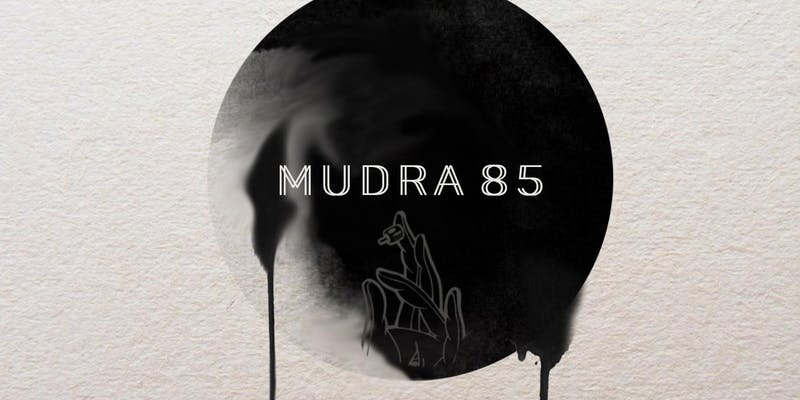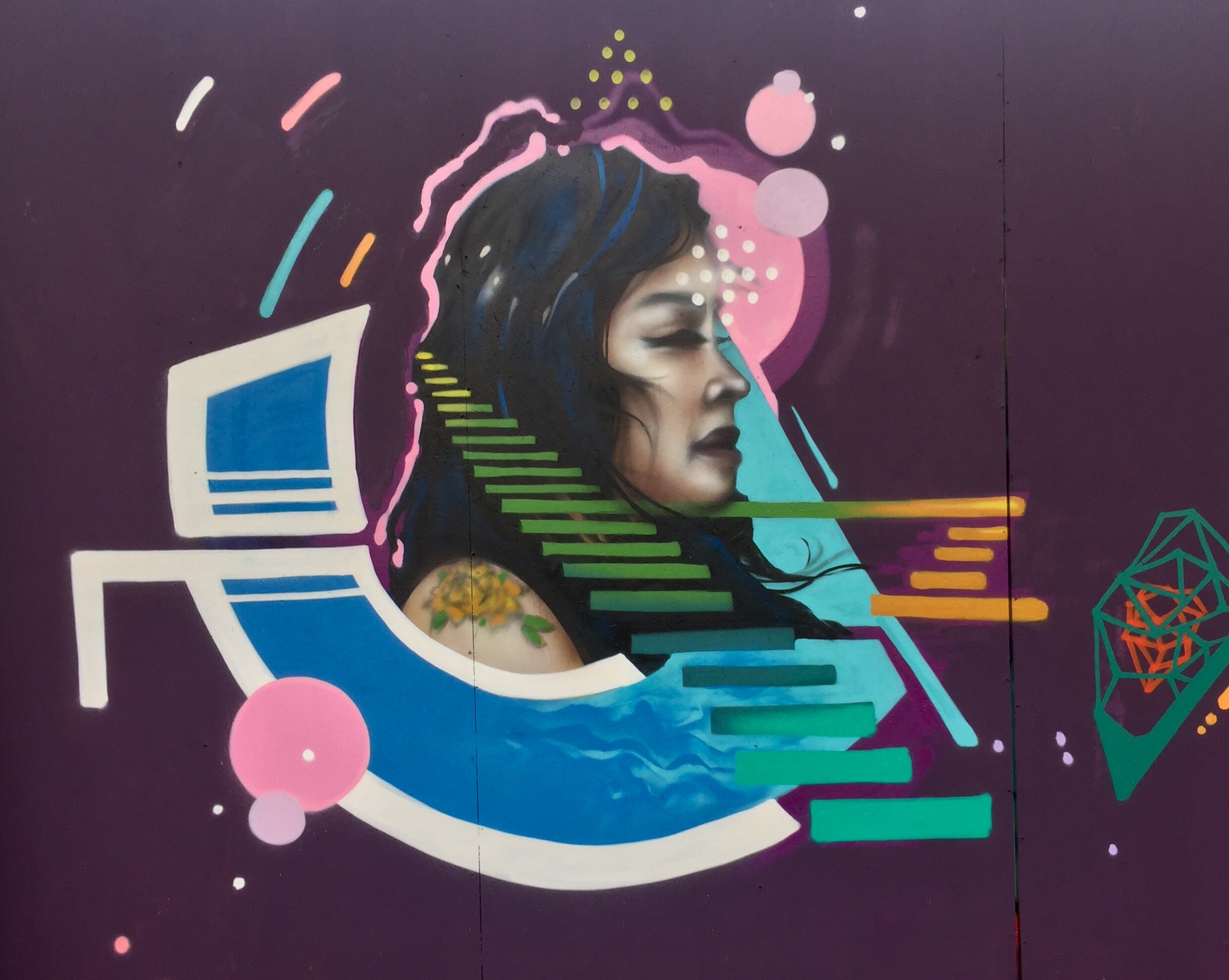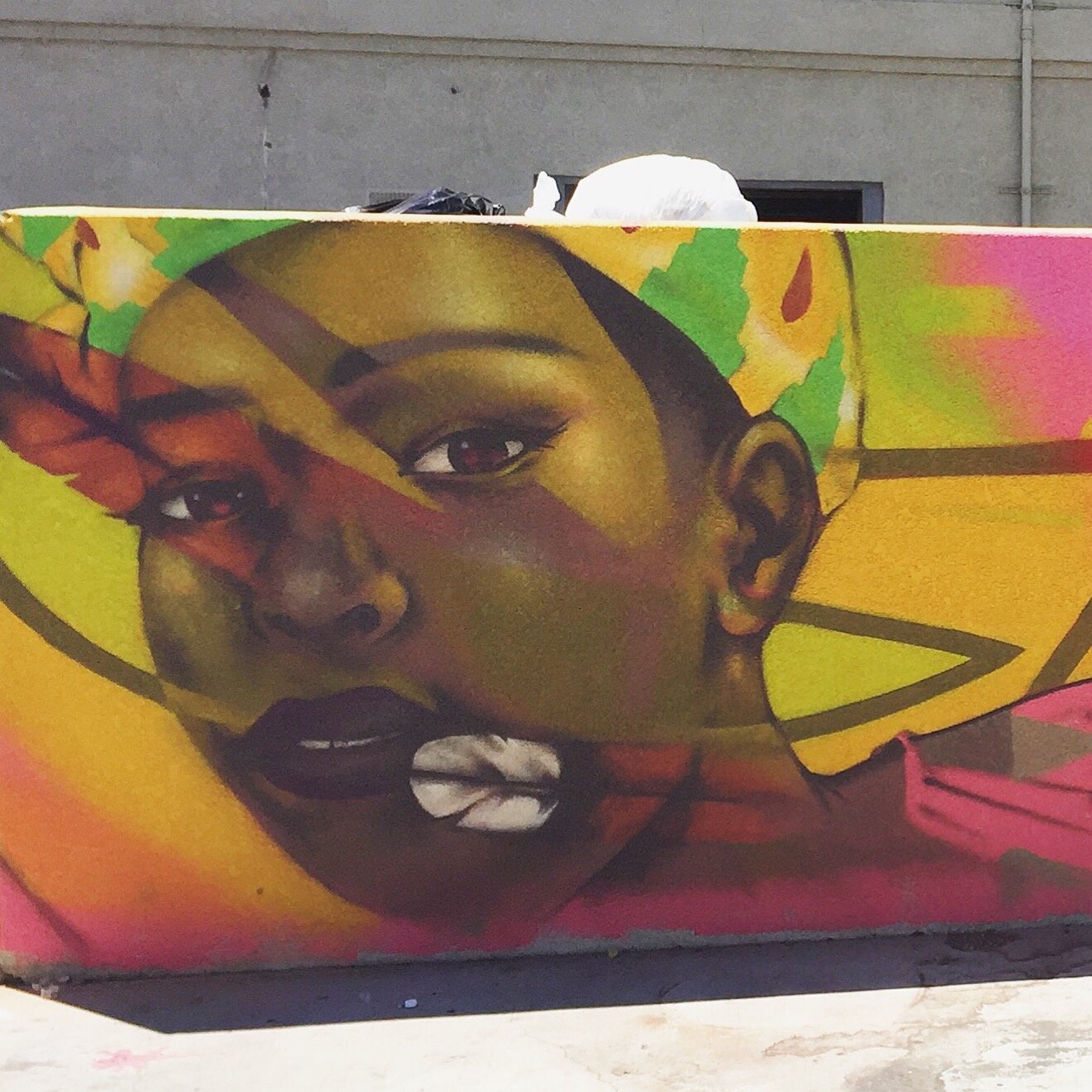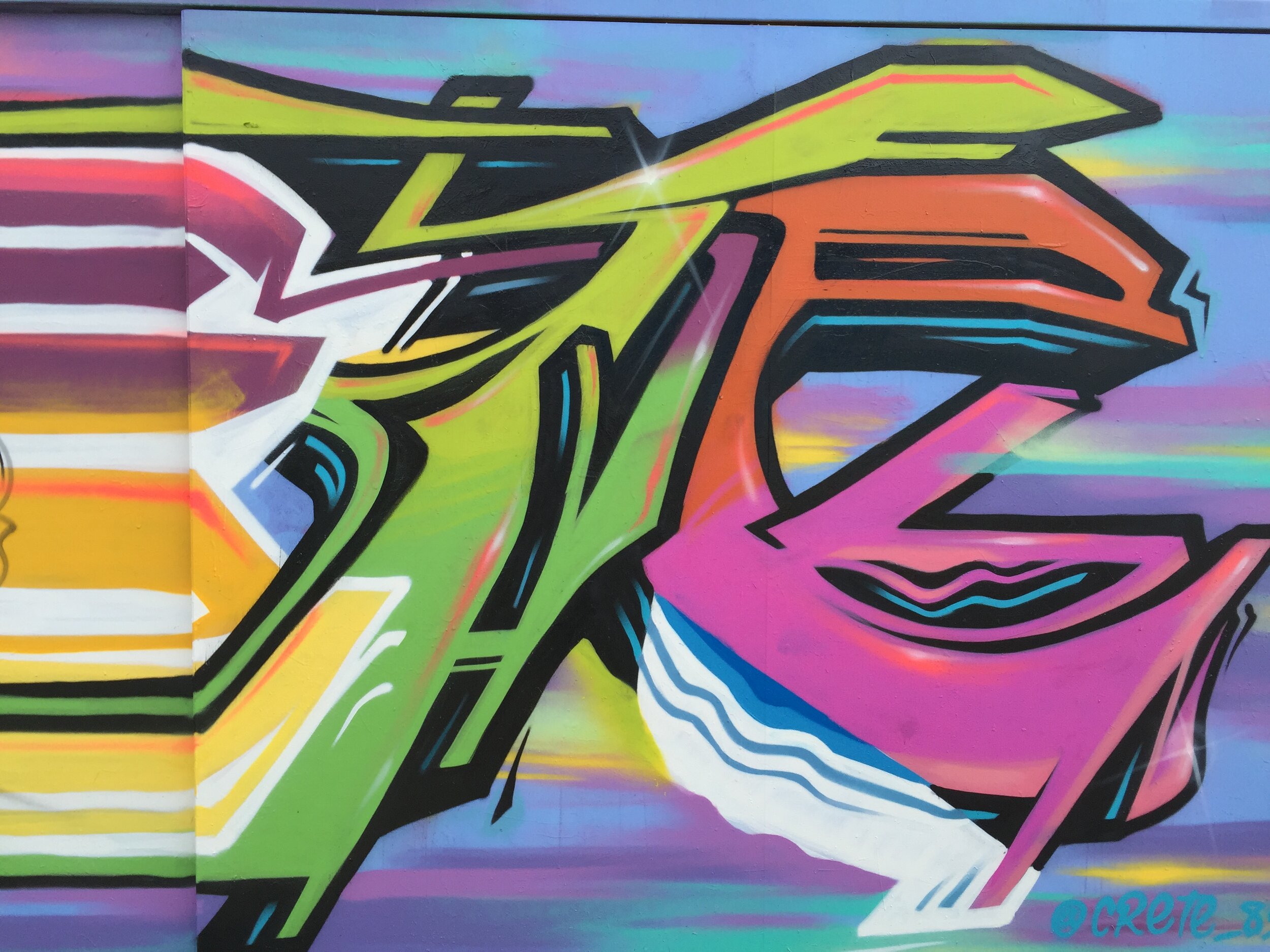What’s an urbanist, you ask? Erik Gonzalez—artist, rebel, designer, community leader—is a living example of a movement that’s taken California by storm. Having expanded this summer to Washington state, he and his team pave the way for communities that want to engage the public through cultural and artistic events. Urbanists Collective focuses on a creative calling that, through education, demonstration, and outreach, showcases art as it happens.
Erik unveils his latest solo show, MUDRA 85, at the Vibe Cowork micro gallery this month. The show will feature the different faces of graffiti, and art as a spiritual outlet. The Artist’s Opening Reception is Thursday, November 7, 5-7pm. Tickets are available here. The event is free; RSVP is required.
Executive Director Erik is a little bit hip-hop, a little bit rock and roll, radiating warmth and an easygoing manner. He’s someone you could talk with for days. There’s no horizon for Erik—just one big cosmic door. With the heart of a true artist and grin that could stop you in your tracks, he sparks ideas back and forth, virtually lifting off into the Vibe space.
About Urbanists Collective, which he founded, Erik illuminates, “We’re community engagement specialists. Urbanism is traditionally associated with architecture, urban planning, or landscape design. Everyone knows what architects do, and we’re kind of the architects of bringing artworks that are alive into the public arena. We are actively redefining spaces that everyone in a community or city has access to.”
UC is all about sponsoring dynamic experiences via events and festivals, incorporating activism into the arts, and thereby attracting underserved populations and young people. For example, their rural murals project created rural community hubs by creating artwork on common grounds, or Art Brigade that created a spray painted mural at the Hanford Police department with a focus on suicide prevention and relationship building between youth and police.
>
“Urbanism is traditionally associated with architecture, urban planning, or landscape design. Everyone knows what architects do, and we’re kind of the architects of bringing artworks that are alive into the public arena. ”
UC is also the co-curator of “Taste the Arts,” an annual festival that celebrates the rich cultural and artistic heritage of Tulare county in California. Along with pop-up workshops, enrichment programs have been implemented at many school campuses and youth venues. In most recent years, Erik developed DSGN, Co Creative Studio, a program that introduces young people to creative careers and entrepreneurship skills. DSGN was inspired by coworking spaces and creative industries. The program is currently working with career pathway students in California, and other community youth.
What brought you to Vibe?
Well, I started researching potential partners, potential funding, and some of the key issues out here, and, most importantly, with whom I could network. What are the resources in Kitsap County and the greater Seattle area? I found Vibe and was attracted to it immediately. The environment alone played a huge role. You can see and feel how Vibe is just doing things to make a difference. Even the “smaller” things like its visual identity and marketing spoke to me, saying that the people in this space value creative minds and creative thinking. There are other coworking spaces in the area, but they lack these traits, and I needed a dynamic launch pad to tap into the wealth of resources available in Kitsap.
What is urban-influenced art?
It’s making artwork public, taking a traditional urban landscape and making it more alive with color and creativity. That’s why we chose the name Urbanists. It’s redefining public spaces, just as an architect would. Except we add an inclusive nature to it all by connecting communities, artists, and leaders.
For example, in Central California, where we originally launched this initiative, Urbanists crosses over with other pro-social organizations, like a youth group suicide prevention taskforce, and creative therapy projects contracted by Public Health. We want artwork to be open, accessible, integrated into society and social awareness so that we’re doing good in the world while adding color.
Who or what was the inspiration for the Urbanists Collective?
It started out as an exhibit. I was invited to curate a modern art show at a big festival of which we are now a huge part. Anyway, the exhibit was called “Urbanists.” It introduced graffiti mashed together with contemporary works. The showcase was extremely successful and generated tons of interest. All of these artists came up to me and wanted to be involved. “When’s the next event?” they were asking. I’d figured it was a one-off, but quickly recognized the immediate need for more of this fusion.
There were a lot of outcast artists who were not being allowed to participate in other art groups. They were considered too dark, too edgy, too street, too expressive, whatever. That’s how the collective came about. And as we started organizing arts and culture (or subculture), we discovered that a lot of these people were also involved in some kind of service work, working with non-profits for decades.
I was a case manager for teens and migrant workers at the time, collaborating with restorative justice programs and mental health for adolescents. Other artists were working for the county on youth programs at faith-based organizations. They were walking the walk with their community work.
I knew that we had something unique. That’s when I founded Urbanists Collective with a mission to fuse the public art element and the service to community together.
>
“I found Vibe and was attracted to it immediately. The environment alone played a huge role. You can see and feel how Vibe is just doing things to make a difference. Even the “smaller” things like its visual identity and marketing spoke to me, saying that the people in this space value creative minds and creative thinking. ”
How has Vibe influenced your presence in the community?
Alanna, the founder, other Vibe staff, and the members are extremely instrumental in making connections to opportunities out there. Those introductions go a long way. There’s a real community element of people crossing over and collaborating with one another.
Have you attended any Vibe events lately?
Urbanists Collective was fortunate enough to participate in their first art exhibit called “VIBEism.” A community celebration of art and design, it launched the space as a micro gallery with diverse works by members. It was really exciting, really fun to be a part of, because you could feel the real possibility that everyone can become an artist. Phenomenal. I’m very proud of that collaboration.
Share with us a bit about what you see as the cultural and artistic heritage of Kitsap County.
I love the presence of the native cultural arts, so unique to the Pacific Northwest. That style is very attractive to me. We just don’t see that in California, that rich tapestry of our cultural heritage. It’s beautiful to just come across Native American artworks so spontaneously here. You could be walking along and just boom. You’re discovering a plaque or statue. It’s wonderful and so accessible. It’s very unique to this area.
What’s the next event you’ve got coming up with Urbanists?
There are a few things. Just today I was sharing with Alanna that the collective received registration approval for Washington, so now Urbanists is able to apply for state grants. To kickstart our presence, we’re planning a small exhibit that will help us raise funds for some of the local fees. A dozen artists have already agreed to participate in “Cans with a Cause.” Empty spray cans are being customized by different artists with their own styles, and then we sell them.
This project is also part of a social enterprise known as U PAINT? (in question form) Urbanists art supply pop-up shops. We’ll be creating customized spray cans for our auction, to help with expenses that grants don’t cover, like insurance and yearly reports. These pop-ups have been a very successful fundraising method in California.
>
“UPDATE* The U PAINT? pop up ran from Sept 16 – Oct 5 in Manette, Bremerton and was extremely successful. Guests from Seattle, Tacoma and all Kitsap walked through the doors. Please keep an eye out for more U PAINT? pop ups. ”
“Queens of Style” is a signature event for Urbanists. Tell us about that.
Live graffiti is just so exciting. We put “Queens of Style” together three years ago, and it’s become an annual event, hosted during International Women’s Month/Day events. We dedicated it to female artists that are recruited from all over the country, helping with travel expenses and lodging. They perform graffiti live, motivating young girls and women and families everywhere.
These artists show off their talents with aerosol paint, creating masterpieces right before your very eyes. Everyone is invited to come along and help us paint. “Queens of Style” was also become a kind of job or resource fair. You have multiple service providers, such as county mental health initiatives, public health departments, the library, counseling services, college recruitment, and more surround the exhibits. Each organization is required to offer a creative workshop—a compelling platform for engaging adolescents and young adults.
In the past couple of years, we’ve had a few artists from Seattle and the rest of Washington attend “Queens of Style,” and we’re hoping to bring it here in 2020. My hope is that Urbanists will host it in Kitsap County. The most challenging part is securing wall space for these massive murals. In Visalia, California, the city gave us access to a condemned property, handing us the keys and turning the collective loose to paint and create. It really helped us to build a foundation for the arts district there. Pretty neat.
Who’s your favorite artist of all time and why?
That’s really hard to pinpoint. I’ve been influenced by a lot of my own close friends. Their work inspires me. My sons inspire me. Emilio’s only 15, and I’m really jazzed about the level of visual art that producing right now. He’s embracing that side of himself, and he’s selling—and has been since he was seven or eight. That’s super inspiring. I see that Emilio is just driven by creative energy and manifesting it in a productive way.
I should have expected it, because they both used to attend many public events by Urbanists. And even before that, they have always been involved with arts. With the move here to Kitsap, Emilio has just gone BOOM!, taking on a lot of animation and cartoons. He doesn’t really cater to other styles. Emilio’s already had people ask him for commissioned pieces. Okay, he says, but it’s got to be my style. Right on, dude, I say. Emilio is also the youngest face of the organization, and is now deeply involved in what we’re achieving.
Who’s on the top of your playlist?
Let’s see. I listen to a lot of Sound Cloud DJ playlists. What I love about Sound Cloud is that I don’t really need to be knowledgeable about all the artists. I just click Play.
One of my favorite producers right now is Om Unit. I can’t stop listening to his work. It’s incredible. Another is Cosmic Bridge. I’m into a lot of DJs and their playlists, and that’s how I discover someone. It’s free music. I don’t like Spotify and it limitations.
I also find myself connecting with a lot of Euro music, electric and even their version of hip-hop, which is grime. Because of the graffiti nature of much of my work, a lot of people think I listen to hip-hop. But I don’t have any hip-hop on my playlist!
Your house is going up in fames. What do you run back in to get?
Assuming my wife and son are already outside, I think my laptop because I have my entire career on it. Besides that, my birds. I have two African lovebirds. Poopsie and Armando make every iPhone sound you can think of. When calendar items go off, text chimes, and that photo sound of when you’re taking pictures. Also, I’d fetch my daughter Suki, she is a bulldog.
Who’s been your biggest hero?
There is a skateboarding brand I love called Anti-Hero. There are lot of heroes out there, but I choose not to chase after any one hero. I’m kind of on my own wave, but I do look up to many influencers, A to Z. However, my dad was a very inspirational musician to myself and others. He was an accomplished artist in Mexico, and made some big moves here as well. In the 80s, he won OTI, a Spanish version of America’s Got Talent. That was wild. When I was a teen, he left his day job to become a full time artist/musician. At the time I didn’t really get it. Now I understand the power of this creative force he was chasing – and in a sense, I am now doing the same.
Shouts to my Wifey, Elizabeth. Thank you for all of your support throughout the years. Shouts to the Vibe Coworks crew, you rock! And Susan, thank you for your interview magic. 🙂
Meet the author: Vibist Susan O’Meara is a Poulsbo-based freelance writer, editor and journalist with global experience. Back in the day, Susan did event marketing for the electrified Don King, boxing’s bad-boy biz whiz. Then she got roped into writing and producing TV spots for Love Boat: The Next Wave, the ‘90s reboot, and nonfiction programming for Showtime (e.g., Roswell: The Real Story). She’s not sure which was more surreal—going with the flow of those Hollywood highs, so to speak, or navigating Nairobi’s magazine scene. Susan has worked in the US and abroad for the likes of Bloomberg Media, Deloitte, Discovery Communications, and the United Nations. She’s obsessed with wrangling language and messaging that helps brands, businesses, and individuals to grow and shine. Except when it comes to Don King’s hair.






